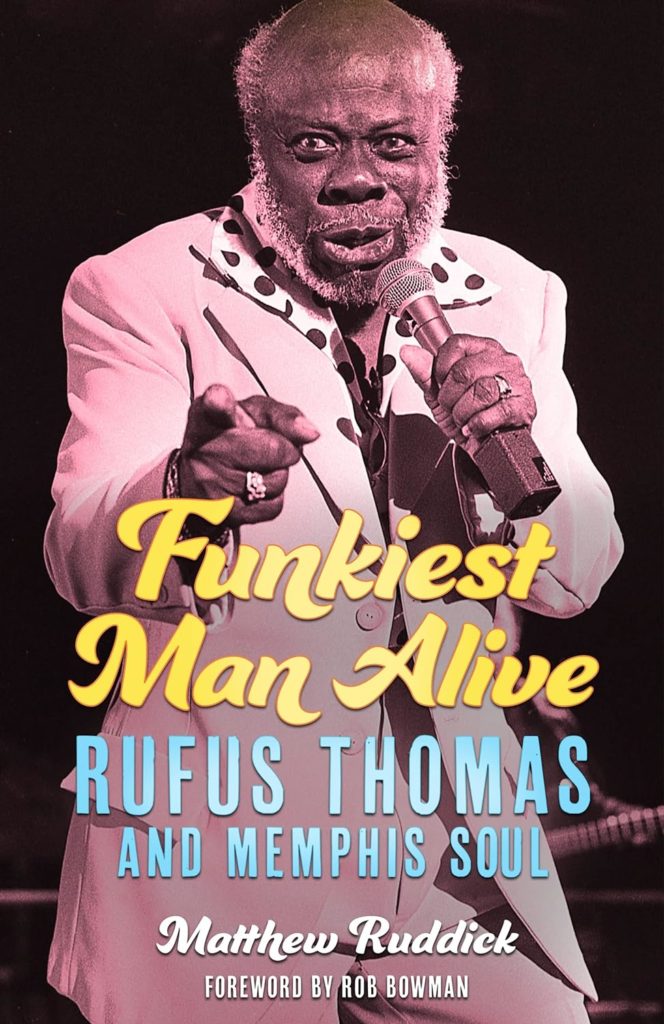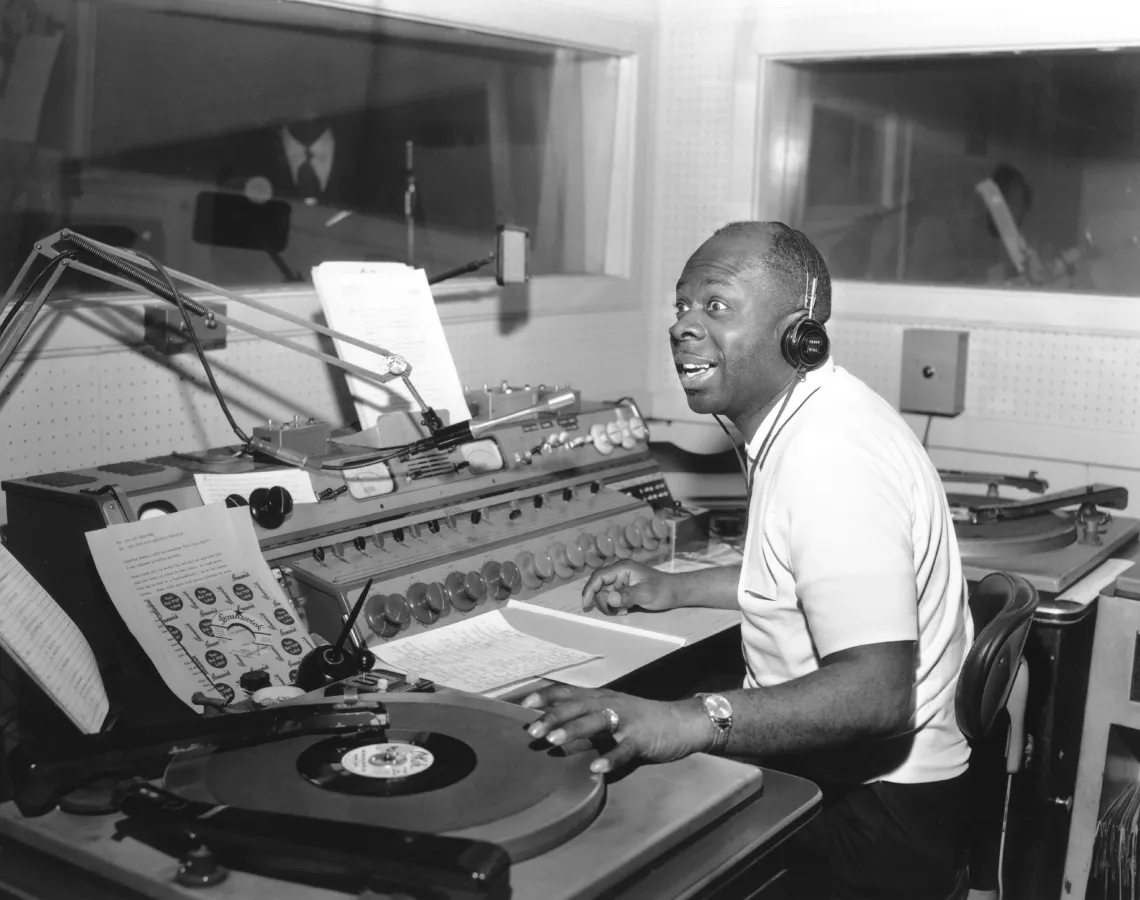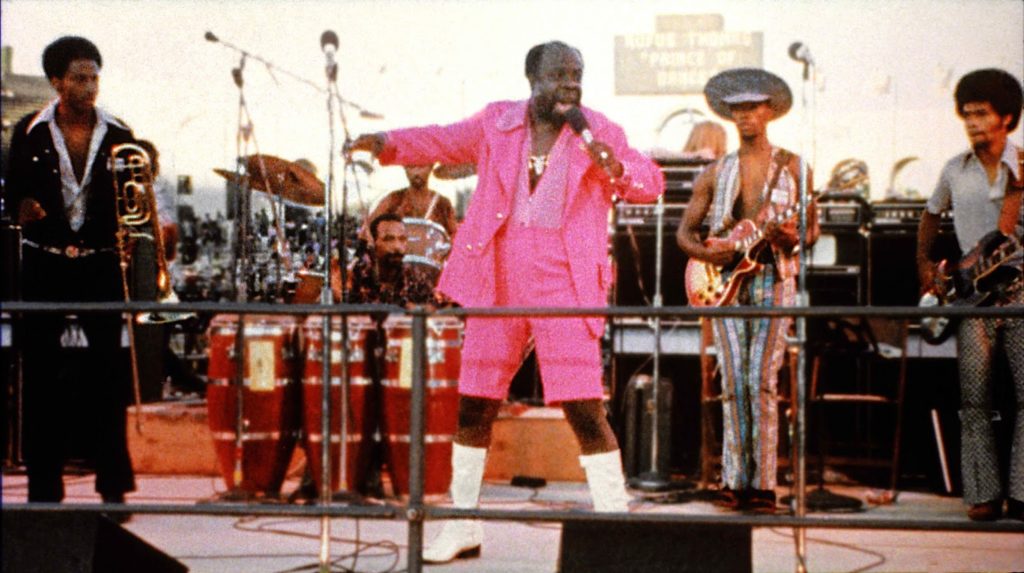When it comes to Rufus Thomas’ contributions to music and his incredible legacy — which is sadly underappreciated — get a pen and paper because the list is quite impressive.

If it’s dance music, he’s a go-to. Nicknamed “The World’s Oldest Teenager,” Thomas’ catchy dance tunes and unique style are captured on cuts like “Do The Funky Chicken” and “The Dog”. Funk traces some roots to “The World Is Round” and “The Memphis Train” which Tomas released in the 1960s. His “Bear Cat,” “Walkin’ The Dog” and “Jump Back” are connected like strands of DNA to the world-famous “Memphis Sound.”
But there was much more and you can learn about the fascinating patriarch of Memphis soul by checking out the Sept. 16 edition of Greasy Tracks.
Here’s the archive, while the playlist is here.
In addition to a deep dive into the Thomas catalog, there is an interview with Matthew Ruddick who discusses his stunning book, Funkiest Man Alive: Rufus Thomas and Memphis Soul (University Press of Mississippi). London-based Ruddick is co-founder and editor of Kind of Jazz and the author of Funny Valentine: The Story of Chet Baker (Melrose Books) which came out in 2012.
There’s also a mix of Thomas tracks covered by a wide range of artists to provide just a snapshot of how he influenced so many others.
As an entertainer, Thomas was not only dynamic, but a dynamo. The program will provide an insight to the remarkable, yet vastly overlooked, artist, highlighting his contributions to rhythm and blues, soul and funk.
Born in 1917 in Cayce, Miss., Thomas was raised in Memphis and quickly influenced by the city’s rich musical heritage, which included blues, gospel and soul. As a youth, he would tap dance for coins on Beale Street, but his first foray into the music world came in the 1930s when he joined the Rabbit Foot Minstrels, a variety troupe, as a tap dancer. His knack for dance and his love for music quickly became apparent, foreshadowing a career that would seamlessly blend the two.

His breakthrough came in 1953 when he signed with Sun Records and started working with Sam Phillips, the label boss and producer at his own The Memphis Recording Service which would later become Sun Studio. Sun launched the careers of Elvis Presley, Johnny Cash and Jerry Lee Lewis, amongst others.
Though Thomas didn’t achieve the same level of mainstream fame as these artists, he made significant contributions to the burgeoning rhythm and blues scene.
At the time of his early Sun sessions, Thomas was a disc jockey on WDIA in Memphis, a groundbreaking station that was the first to feature all-black programming. His popularity as a DJ helped him build connections with record labels and promotors.
Recording as Rufus “Hound Dog” Thomas, his 1953 debut single, “Bear Cat,” was a response to Big Mama Thornton’s “Hound Dog” and garnered substantial attention and sales, despite its legal issues due to copyright infringement — Philips literally nicked the lyrics from “Hound Dog”. It would be the first hit for Sun and Thomas, ultimately reaching No. 3 on the Billboard R&B charts.
In 1963, Thomas released “Walking the Dog,” which became a dance sensation, going to No. 10 on the Billboard Hot 100. It would go on to be covered by 100-plus artists and remains his most successful single.
His most enduring legacy is undoubtedly his association with Stax Records, the iconic Memphis soul music label. At Stax, he became a vital part of the label’s roster and contributed to its distinctive sound. His recordings with Stax merged R&B, soul and funk. He was best known for his high-energy stage performances, which often included his signature dance moves and eye-catching wardrobe.

Thomas’ talented children, Carla and Marvell, left an indelible mark on the music industry during their time, initially at Satellite Records, which would become Stax Records in 1961.
Marvell was the first piano player at the label and would appear on scores of classic tracks as a musician and later, producer. Carla, known as the “Queen of Memphis Soul,” brought her emotive voice to classics like “Cause I Love You,” a duet with her father as Rufus & Carla, which went up the regional charts. It also gained the attention of Atlantic Records which would sign a distribution deal for the single, ultimately selling more than 30,000 copies, thus providing vital cashflow to keet the burgeoning label up and running.
Carla followed with her first national hit, “Gee Whiz (Look at His Eyes),” which reached No. 5 on the R&B chart and No. 10 on the pop chart in 1961. It was also the first hit recorded — and initially released — at Satellite.
A younger daughter, Vaneese, would make her debut as a five-year-old on Carla’s “A Boy Named Tom” in 1964. She later become a solo artist, but also recorded or toured with everyone from Luthor Vandross and Bob James to Eric Clapton, Melba Moore, Freddie Jackson and Sarah Dash.
Rufus Thomas’ influence is wide. His “The Breakdown” and “Do the Push and Pull” no doubt rubbed off on artists like James Brown, George Clinton and Prince, who all incorporated elements of his style into their own music and performances.
Thomas passed away at the age of 84 in 2001.
